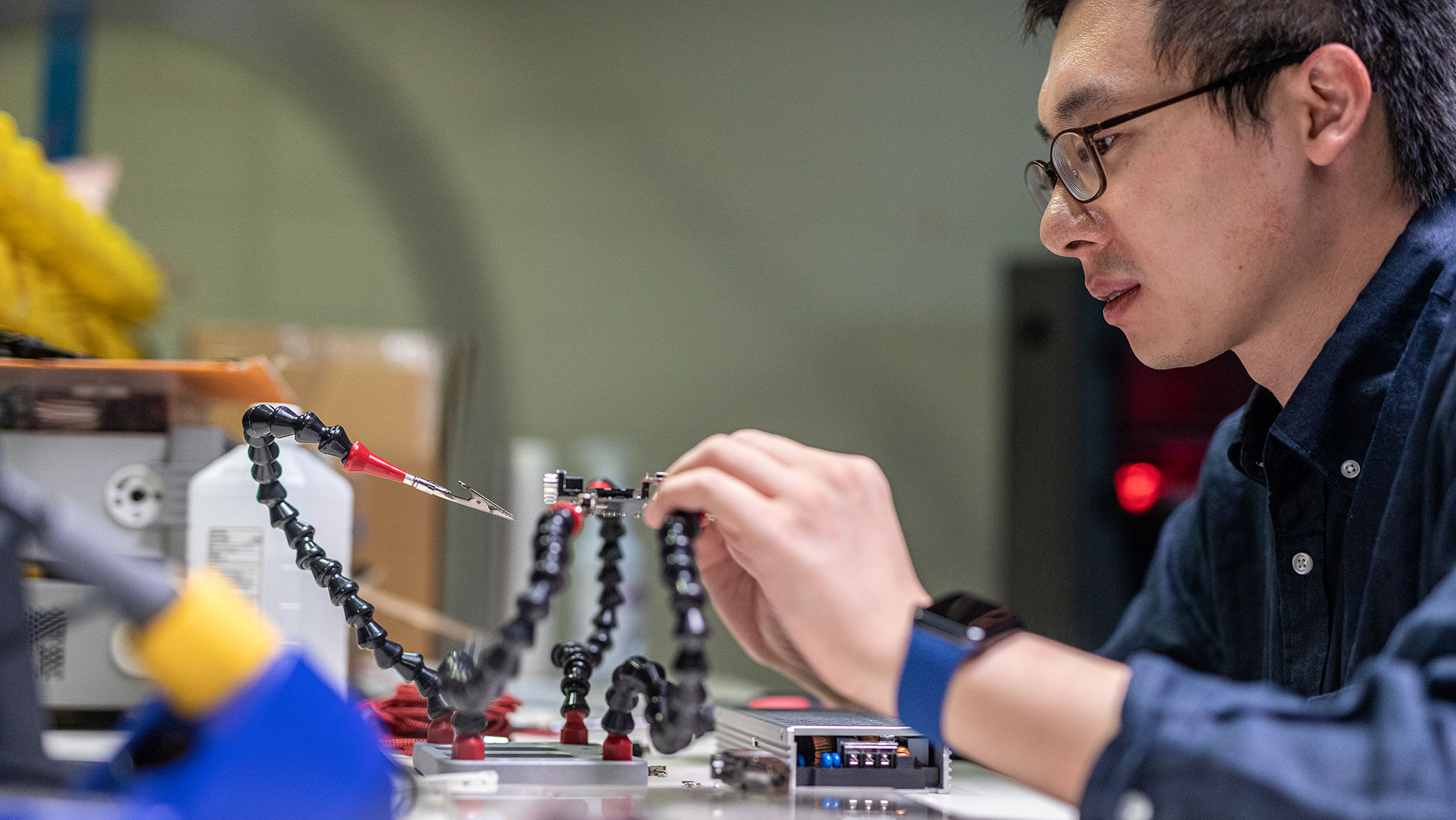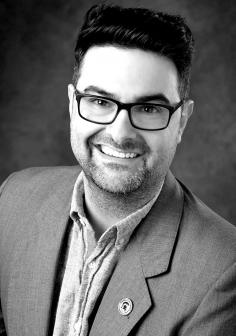
Welcome to Electrical and Computer Engineering
The Department of Electrical and Computer Engineering (ECE) has a tradition of excellence in teaching and research that dates to 1909. An ECE degree prepares electrical and computer engineers for a dynamic, ever-changing field and offers an excellent background in medicine, law, business, and other analytical disciplines. Our faculty are actively engaged in electromagnetics, materials and devices, microelectronics, computing, robotics and control, energy and power systems, signal processing and communications.
Students master their interests through classroom instruction, laboratory research, industrial internship experiences, international exchange programs, and project teaming. Design and hands-on labs and courses broaden their educational experience. ECE also has expanded research expertise in nanoscale technologies, advanced microsystems, ubiquitous communications, biological and biomedical engineering, signal processing, autonomous vehicles and robotics, and efficient energy production, transmission, and conversion.
935
Undergraduate Students
(Fall 2024)
218
Graduate Students
(Fall 2024)
357
Degrees Granted
(2023-2024)
$16M
Research Expenditure
(Fall 2023)
39
Tenure Faculty
(Fall 2023)

Welcome to the Department of Electrical and Computer Engineering at Michigan State University! I hope that you and everyone you love are doing great!
All progress in science, technology, and society comes from education and research. Our department has historically demonstrated continued growth of our education and research programs, where the three main players are students, faculty, and supporting staff.
The impact of the advancements that are enabled by education and research are most significant in what I consider to be the most ubiquitous engineering field: Electrical and Computer Engineering. It is very difficult to think of a large engineering project that does not require Electrical and Computer engineers – at least I cannot think of a single instance. We are aware of the role of our discipline in society, and we want Michiganders to have first access to high quality education and training in this omnipresent field of engineering. With about 915 students, our undergraduate program is the largest source of Electrical and Computer engineers in the state of Michigan. This brings pride, but also a sense of responsibility that our faculty understands. The placement of our undergraduates is around 97%, and 68% of them are employed in the state of Michigan with a median starting annual salary over $79k. In 2023, our department awarded 154 BS, 24 MS, and 22 Ph.D. degrees; and started a graduate certificate on Semiconductor Manufacturing, Processing, and Devices. We are also continuing to grow our MS online program, which has mainly benefited currently employed engineers in gaining additional training for advancing their professional careers.
The success of our faculty this past year is evidenced by more than 170 journal publications and around 30k citations per year, and over $18M in research expenditures --which represents around 30% of the total expenditures in the College of Engineering at MSU and continues our trend as the top performing department. Our education and research impact is expected to continue growing through two new large NSF awards that will address real-world water resource problems (NRT-HDR: WaterCube, $3M) and implement voice artificial intelligence to assist people who stutter (NSF Convergence Accelerator $5M). These (and every other research project in our department) bring progress in science, technology and society, which, as the first Land Grant University, we have traditionally been using to train the largest population of future generations, particularly in our state of Michigan. But research growth that is isolated from students often results in disconnected efforts, which may struggle to survive. Long-term progress requires strongly correlated growth of education and research. I am proud that our department has several initiatives that link faculty and student growth. For example, our mobility team (composed of faculty and students), set the record for the fastest autonomous Hill Climb and they just won the passing competition in the Indy Autonomous Challenge on Sept. 6, 2024! Other student-led ECE engineering teams that work closely with faculty include the solar racing car team and the drone team – which has secured external funding from NASA. Our engaged staff members are the ones who make all our research and education efforts happen. They act as the “DC bias voltage” that is required for amplifiers to operate in a circuit –without it, nothing works.
We have plenty to celebrate. Our future looks brighter every year, and using the preliminary data, I objectively can say that things will get even better! I invite you to browse our faculty research websites for more exciting details. Go Green!
Nelson Sepúlveda
ECE Interim Chairperson
The Department of Electrical and Computer Engineering offers the following undergraduate degree programs:
The Department of Electrical and Computer Engineering offers the following undergraduate degree programs:
The electrical engineering and computer engineering programs are accredited by the Engineering Accreditation Commission of ABET.
Visit Undergraduate Admissions for information on applying to the programs.
Gerald DeJean
- Senior Manager - Engineering
- Raytheon Technologies
- Email: gerald.dejean@rtx.com
Rachel Dreikosen
- Director of Revenue
- Block Harbor Cybersecurity
- Email: rach@blockharbor.io
Tooran Emami
- Professor and Electrical Engineering Program Chair
- Department of Electrical Engineering and Computing
- U.S. Coast Guard Academy
- Email: Tooran.Emami@uscga.edu
Brian Kent
- Principal Consulting Engineer and Senior Scientist for Aerospace Radar, Sensors, and Measurements
- Email: brian.kent.phd@gmail.com
Seyed Hossein Mousavinezhad
- Professor and Chair
- Department of Electrical Engineering
- Idaho State University
- Email: seyedmousavinezha@isu.edu
Karen Newman
- Retired Vice President, Global Partner
- IBM Global Business Services
- Email: knewman100@outlook.com
Nelson Sepulveda Alancastro
- Professor and Interim Chair
- Department of Electrical and Computer Engineering
- Michigan State University
- Email: sepulve6@msu.edu
Betty Shanahan
- Retired
- Former Executive Director and CEO, Society of Women Engineers
- Email: Shanahan.betty@gmail.com
Vyshnavi Suntharalingam
- Senior Staff, Space Systems and Technology
- MIT Lincoln Laboratory
- Email: vyshi@ll.mit.edu
Last updated March 2025
